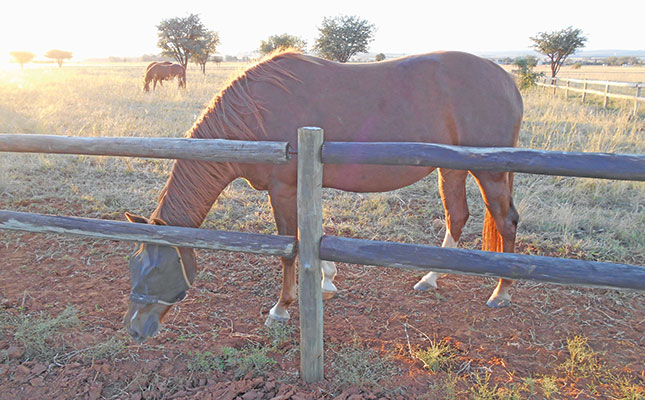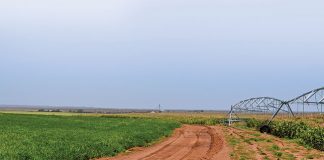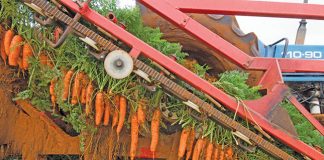
Photo: Dr Mac
Research has shown that gastric ulcers are more likely as a result of environmental factors, such as management and feeding, than genetics. The equine stomach is divided into two parts.
The upper (glandular) part is most affected by stomach ulcers. In nature, a horse will graze for more than a third of the day. Because of this, gastric acids are secreted almost continuously to assist in digestion.
These acids are buffered by alkaline saliva as the horse chews. Unlike a ruminant, a horse is unable to regurgitate its stomach contents, and most roughage is thus digested in the large intestine.
Causes
Domesticated horses, which are often stabled or kept in small paddocks, do not necessarily receive a continuous supply of roughage as required. This can result in gastric ulcers.
The best way to avoid stomach ulcers is to institute a daily routine in which the horse has ready access to a source of good-quality roughage, sufficient water and exercise.
High-performance horses are often fed diets containing highly digestible carbohydrates, such as maize and oats. While this provides the horse with the energy levels required for activities such as racing or showjumping, it can cause increased gastric acid.
A high proportion of performance horses (up to 80%) have been shown to have gastric ulcers.
Stress is also a major cause of stomach ulcers, and can be caused by moving to new stables, being transported or isolated, or having many different handlers with different expectations.
Horses like a fixed routine. Lack of water, intermittent feeding and a haphazard approach to exercise and management are important contributors to stress and gastric ulcers.
Moreover, improper mastication of roughage and a lack of the excretion of saliva can also lead to gastric ulcers. It is therefore essential to have your horse seen by a dentist regularly (every six months at least). Windsucking is also an important cause of gastric ulcers.
Symptoms
Signs that your horse has gastric ulcers include weight loss and lethargy. You may also notice that it has a poor appetite, a staring coat and low-grade colic, and kicks or looks at its abdomen.
Sometimes, there may be a change in the horse’s attitude or behaviour due to chronic pain, and it may become nervous or aggressive. It may also show discomfort when the girth is pulled up or a blanket is fitted.
Treatment
There are two recognised approaches to diagnosis. A vet will generally sedate the horse and pass an endoscope through its nostril and down the oesophagus to examine the gastric mucosa.
A newer method (not generally available in South Africa yet) is to conduct a guaiac test on fresh specimens of manure. This test demonstrates the presence of occult blood (a bleeding ulcer), and can be used to diagnose gastric or colonic ulcers.
The main treatment for gastric ulcers is a daily dose of omeprazole for at least three to four weeks to suppress stomach acidity. However, this medication is very expensive, and ulcers may recur if horse management is not adapted.
Misoprostol is a human drug that suppresses acidity and enhances the mucosa’s resistance to injury. It can be given three times a day as a feed additive, but is not safe for in-foal mares.
Dr Mac is an academic, a practising equine veterinarian and a stud owner.











